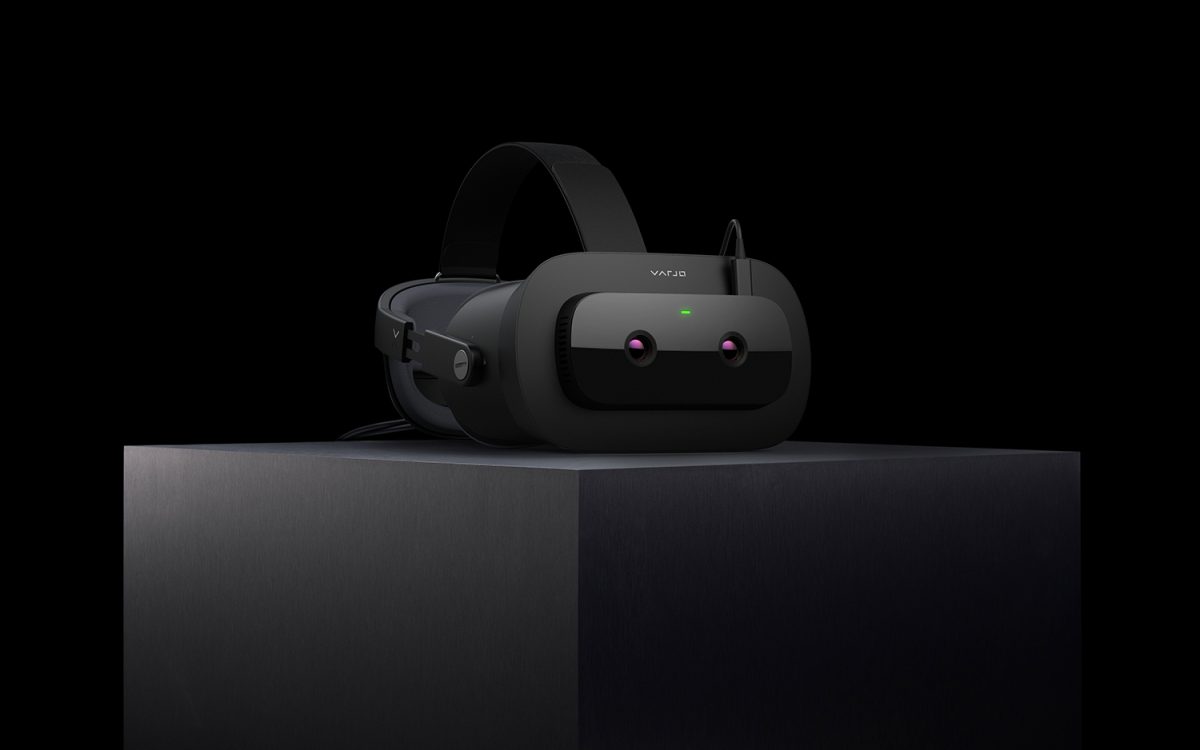Our work at MXTreality is all about the outcomes we deliver for our clients, with the emphasis on creating highly detailed immersive experiences that are utterly convincing and involve as many senses of the user as possible.
We rarely talk about the technology we use, in the same way few people worry too much what type of brushes Picasso used, his artwork is the revelation worth discussing.
But every now and then we have to focus on technology, especially when it is something new that not only pushes boundaries, but rips them up and moves them wholesale to a new postcode – meet the Varjo XR-1 headset.

It is described by its creators as, “…a professional mixed reality device for engineers, researchers and designers who are pioneering a new reality. With photorealistic visual fidelity, ultra-low latency and integrated eye tracking, the XR-1 seamlessly merges virtual content with the real world for the first time ever.”
It comes with built-in eye tracker technology to allow us to track users’ eye movements across mixed reality scenarios with sub-degree accuracy, which is critical to understanding how users perceive the virtual environments in which we immerse them.
The proof is in the testing
MXTreality stepped up recently and purchased one of these remarkable headsets, which in itself is a considerable investment. Now is the time to invest time understanding its full capabilities, a task I was more than happy to undertake for team.
The first thing I did was to try out some of the demos available from Varjo themselves, in particular the airliner cockpit and the supermarket aisle photogrammetry demos.
The supermarket aisle demonstrated the rendering fidelity available on the headset with assorted 3D objects lining the shelves. The colour reproduction was outstanding and all text was easy to read, which is significant, as text readability in VR is something of an unresolved problem.
The text in the demo was small writing on coffee packets and shelf labels. Eye-tracking was also available in this demo and although I’ve previously worked with the Vive Pro Eye, I’ve not yet had reason to apply it in a project.
The implications of being able to track a user’s gaze in a mixed reality environment are very interesting however, so I look forward to the opportunity to include this aspect in a client project.
First impressions last
The airliner cockpit was my first experience of the headset’s mixed reality capabilities while having the headset to hand, having only previously had a brief demonstration in the office.
My room at home is a fair bit smaller than a plane’s cockpit, and it showed! I got to test the depth-sensing capabilities in a somewhat more controlled environment however, and was thoroughly impressed at its resolution.
While there’s some artifacting at the interface – to be reduced in future software updates – I can see that the underlying hardware is doing its job admirably, clearly sensing differences in depth of less than a centimetre.
Lastly, I spent some time experimenting with the virtual workspace capabilities of the device. This really excites me, particularly while working from home in a relatively cramped setup. While wearing the headset, one’s computer monitors can be replicated in VR and positioned to taste.
While other VR systems have similar options, the XR-1 is different due to its fantastically high resolution and mixed reality capabilities. I found a lot of text easier to read in VR than off my actual monitors – partially due to excellent anti-aliasing and colour performance, but also – no glare!
It’s a bit heavy to comfortably wear all day, but I think this headset sits comfortably on the precipice of making traditional computer monitors distinctly ‘last-gen’ technology – at least if you’ve got the graphics horsepower to throw at it!
At MXTreality, as we strive to create immersive experiences for users that blur the line between real and virtual worlds, the ability of the Varjo-XR1 to allow us to build photorealistic mixed reality scenarios, has to be seen to be believed.
A special build
Technology like the XR-1 needs a huge amount of computing power to drive its graphics, which is why we had to custom-build something special to get the best from it – here are a few build pics.







